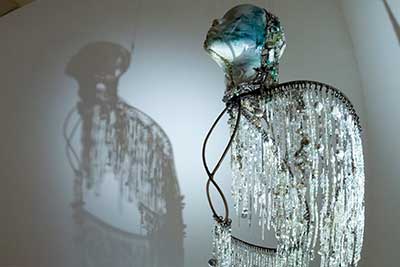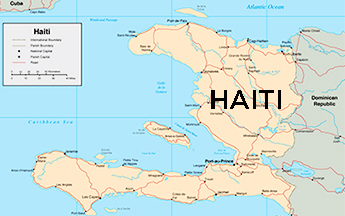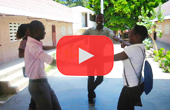Transformative Visions, an exhibit at the Lowe Art Museum from November 2014 to January 2015, featured Haitian art works that spanned more than five decades.
The presentation of Transformative Visions at the College of Arts & Sciences Lowe Art Museum highlights the diversity of Haitian visual art and the formal and thematic dialogue among Haitian and Haitian-American artists across generations and national boundaries.
The exhibition features paintings, sculptures, and textile works that appear together for the first time and span over five decades. As a group, these pieces challenge reductive and stereotypical assumptions about Haitian art, spotlighting both the variety and the interconnection of works falling under that category.
"The materiality and subject matter of the works in this exhibition bring to light the individuality of each artist’s milieu as well as their various creative processes,” said Jill Deupi, Beaux Arts Director and Chief Curator of the Lowe Art Museum. “These works are spectacular examples of Haitian and Haitian-American artists, which show the range of the works that the Lowe has been collecting, preserving, and researching for decades. They are also apt reminders of the vibrancy and rich cultural heritage of a nation that is often eclipsed by other Caribbean art traditions or neglected until a crisis—whether manmade or natural—strikes."

L’Ange de la Résurrection (Resurrection Angel), by Pascale Monnin.
Transformative Visions was curated by Louis Herns Marcelin, associate professor in the Department of Anthropology, and Kate Ramsey, associate professor of history. The exhibition explores the multiple ways in which artists have drawn upon and reinterpreted religious iconography in their Work.
It points to how portraiture, with a long history in Haiti going back to the early nineteenth century, has been reinvented across different media. The exhibition also spotlights the transnationalism that shapes contemporary Haitian artistic production and the connections of these works to broader currents of black Atlantic visual culture.
Transformative practices are central to the creation of many of the pieces, from Sacha Tebó’s flour-sack canvas for his Portrait of a Man, to Louisiane Saint Fleurant’s study of a mother and two children on a floral curtain, to the sinuous frame that Pascale Monnin converts into beaded angel wings in her L’Ange de la Résurrection (Resurrection Angel), to the pieces of scrap metal that Serge Jolimeau and Seresier Louisjuste metamorphize into, respectively, La Sirène and Danbala Wedo, to the repurposed pieces of tire, plastic, and metal that enclose and adorn André Eugène’s mother and child in Ayiti Pap Peri.
The exhibition highlights transformation as an artistic process, theme, and also potential of the featured works and of the greater corpus of Haitian visual art. In sum, Transformative Visions is mounted in the hope and expectation that these works will enable viewers to see Haitian art — and thus Haiti and the world — in new ways.
A highlight of the exhibition is the debut of Monnin’s mobile L’Ange de la Résurrection acquired by the Lowe through funds from Beaux Arts in honor of retiring museum director, Brian Dursum. For Monnin, who created the sculpture (composed of pottery with raku glaze, wire, pearls, and jewels) between 2006 and 2011, “it is the face of a child split by a diamond-studded fault line. The face teaches us the need to live with our scars, to make our stitches sparkling diamonds and to transform our wounds into weapons of mass construction.”



